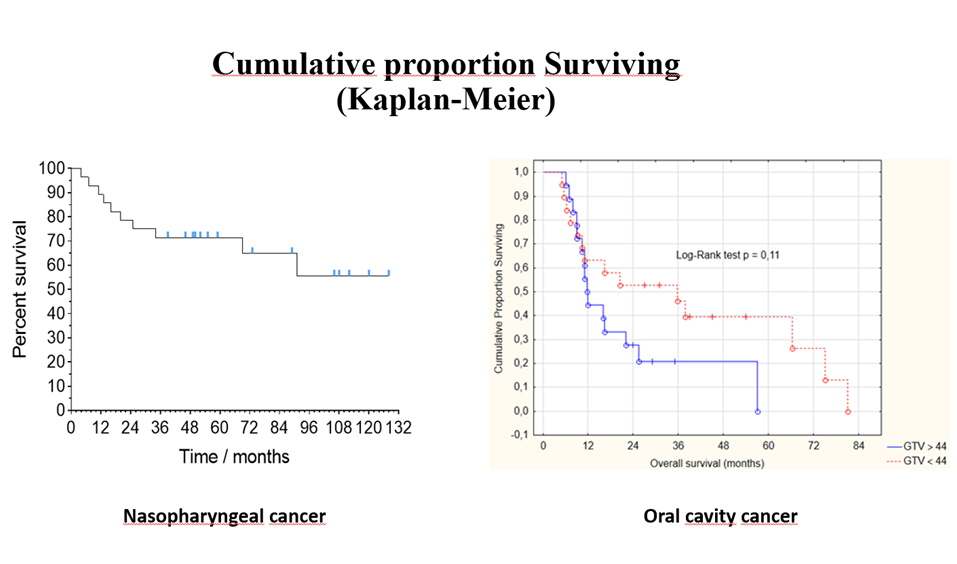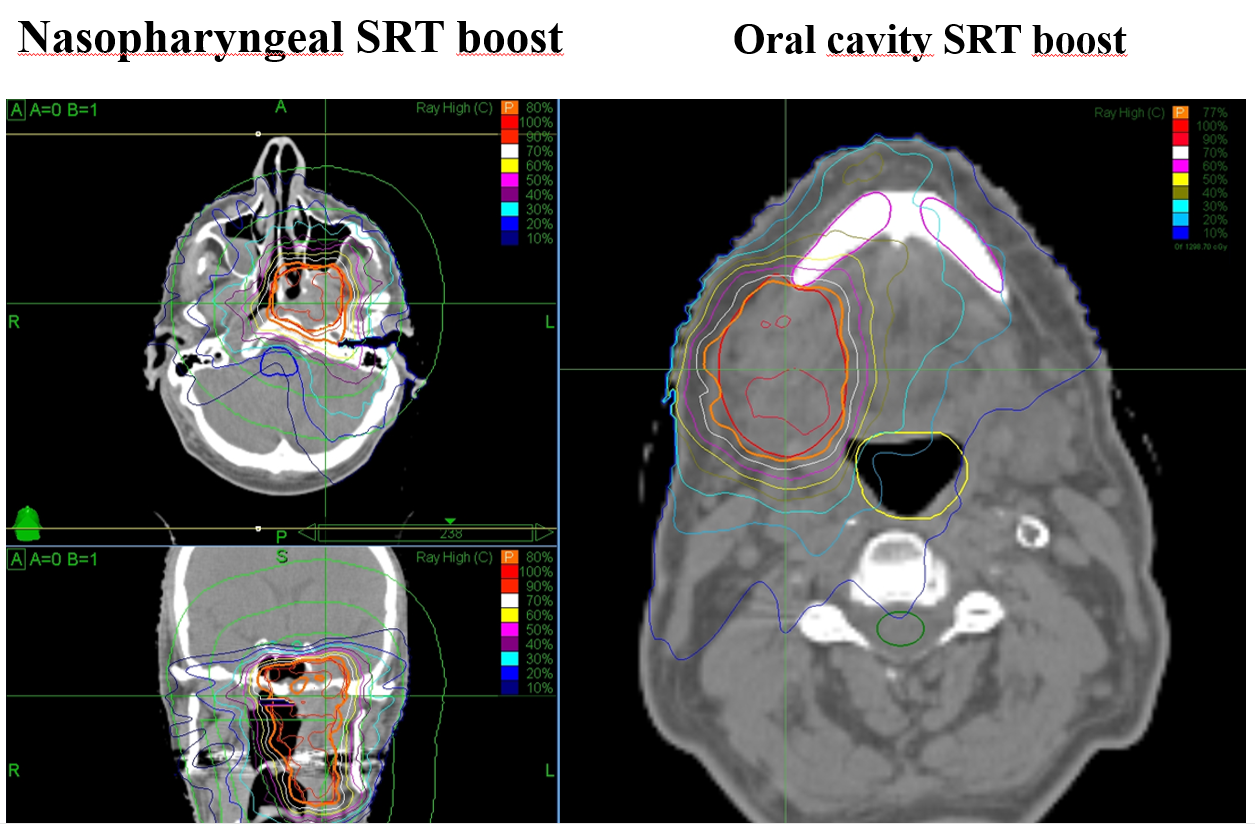Stereotactic boost in treatment of advanced nasopharyngeal and oral cavity cancer – long-term data
Tomas Blazek,
Czech Republic
PO-0087
Abstract
Stereotactic boost in treatment of advanced nasopharyngeal and oral cavity cancer – long-term data
Authors: Tomas Blazek1,1, Zuzana Zdeblova-Cermakova2, Lukas Knybel2, Kamila Resova2, Jana Jackaninova2, Jakub Cvek2
1University Hospital Ostrava Poruba, Oncology clinic, Ostrava, Czech Republic; 2University Hospital Ostrava, Oncology clinic, Ostrava, Czech Republic
Show Affiliations
Hide Affiliations
Purpose or Objective
Nasopharyngeal
carcinoma is known to be highly chemo and radiosensitive and radiotherapy with
chemotherapy remains the standard of treatment. Local control has been shown to
correlate with the total delivered radiation dose up to 80Gy. However, the dose
escalation was associated with additional toxicity. In advanced inoperable
oral cavity carcinomas the conventional radiotherapy and chemotherapy regimens have
reported poor outcomes. A higher biologically effective dose to the primary
tumor is required to improve outcomes. The dose escalation with standard IMRT
techniques may be limited by the volume of irradiated organs at risk.
Historically brachytherapy in combination with EBRT was an effective technique
for dose escalation, but in technically or medically unfeasible cases (large
tumor, contraindication to invasive procedures) an image-guided stereotactic
radiotherapy technique is a new alternative promising treatment option. We
evaluated the efficacy and toxicity of stereotactic hypofractionated boost in
combination with EBRT in the treatment of advanced stage of nasopharyngeal and
oral cavity cancer.
Material and Methods
Between March 2011 and October 2018, twenty-eight patients with nasopharyngeal cancer stage III-IVA and thirty-seven patients with
squamous cell carcinoma (p16 negative) of the oral cavity stage IVA-IVB, ineligible
for surgical treatment were indicated for radiochemotherapy or
hyperfractionated accelerated radiotherapy (HART). Concurrent chemotherapy
cisplatin 40mg/m2 weekly was used. The
radiotherapy protocol combined EBRT and stereotactic boost to the primary tumor. The dose delivered
from EBRT was 70-72.5Gy in 35/50 fractions. The stereotactic boost followed EBRT
course with 5-10Gy in 1-2 fractions. For the variables (tumor
volume, stage , grade) a multivariate analysis was performed to find the
relationship between overall survival, local progression and
metastasis. Toxicity was evaluated according to CTCAE scale version 4.
Results
Complete remission was reached in 93% (26 patients) with
nasopharyngeal cancer and 62% (23 patients) with oral cavity cancer. None of the patients required reirradiation. The 5y-OS was
75% in nasopharyngeal cancer and 27% in patients with oral cavity cancer. Statistical
analysis revealed that larger tumors had worse overall survival and a greater
chance of metastasis. Log-Rank GTV >44ccm (HR=1.96; [95% CI(0.87; 4.38)]; p=0.11). The maximum acute toxicity was grade 3 mucositis
and dysphagia, manifested in 14 (22%) patients with oral cavity cancer and 4 (14%)
patients with nasopharyngeal cancer. Late radiation toxicity manifested as
osteonecrosis in 3(8%) and dysphagia 11(30%) in patients with oral cavity
cancer. And hearing impairment in 3(11%), difficulty chewing and dysphagia
in 6(21%) patients with nasopharyngeal cancer.


Conclusion
Stereotactic
hypofractionated boost seems to be a viable option for dose escalation in
patients with advanced stages of nasopharyngeal and oral cavity cancer. Dose
escalation related toxicity was mild.